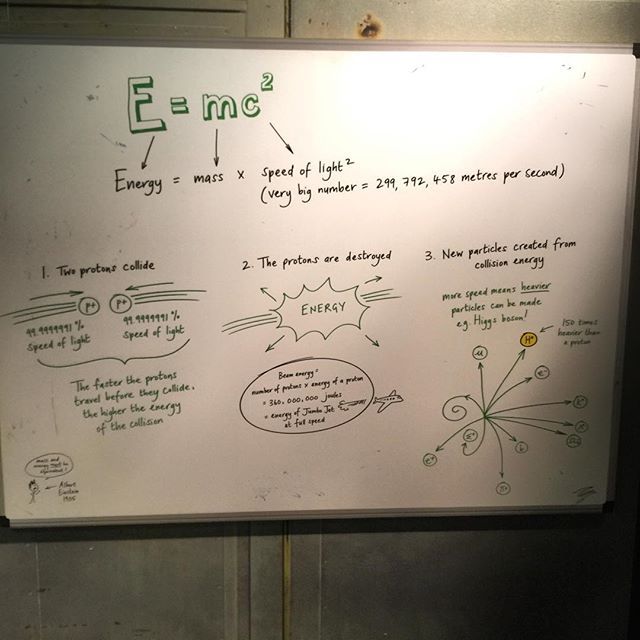Thinking about Communication, Truth and Media with Thermodynamics

The laws of thermodynamics in physics have contributed significantly to our understanding of energy and phenomenon in the physical world. In this essay, I explain how these laws of thermodynamics have offered me perspectives on communication, truth and media.
In physics, we have a generally accepted formulation on the laws of thermodynamics or the study of heat. The best way to express the first three laws of thermodynamics to a layman is in a sequential order: “You can’t win”, “You can’t break even” and “You cannot get out of the game”.
The first law of thermodynamics introduces the concept of energy and is a statement about the quantity of energy, and accounts how the system obeys the conservation of energy. The second law defines the concept of entropy (or amount of disorder in a system) and focuses on the quality of energy and explains why and how energy will eventually be degraded.
The second law of thermodynamics is fundamental in our understanding of systems and explain why the arrow of time goes in one direction. In fact, there is an analogous version of the 2nd law developed by Claude Shannon in information theory and not surprisingly, the disorder in information always increases.
The third law of thermodynamics explains why it is impossible to reach an orderly state in the form of absolute zero, and to the normal person, it shares analogies with the concept of marginal utility in economics. The state of absolute zero is when all atoms are in orderly mode.
In addition, there is a zeroth law which introduces the concept of temperature, where you have objects A, B and C, and if A is in thermal equilibrium with B and B is in similar situation with C, then A is in thermal equilibrium with C. For those who are mathematical buffs, it is the associativity property in how we count things with addition and multiplication.
The best way for me to think about communication, speech and media comes from the laws of thermodynamics in physics. Here’s how I will express them in communication, media and information. First, I assert that I am putting down in how they look analogous to the actual laws of thermodynamics. It is important that I am using physical models to understand a system and not define a system.
Analogue Zeroth Law: If A is talking to B and B is talking to C in any physical or virtual location, therefore we can conclude that A, B and C are in the same conversation.
Analogue 1st Law: All information can be expressed as the totality of truths and untruths in the system.
Analogue 2nd Law: The entropy or disorder on information expressed and communicated always increase upon on human interactions and interventions.
Analogue 3rd Law: The absolute truth in any system is impossible to attain.
The analogue zeroth law version that I have adapted creates the concept of communication and how it is expressed by using conversations between three people who are interlocked with a conversation. The same can be applied to either one-to-many or many-to-one situation. In many-to-many situation, every conversation can be expressed using the information communicated and expressed in that medium. Marshall McLuhan’s central thesis in media studies states that “the medium is the message” fits the mental model I have cast how information is conveyed through conversation between people. It is independent of the channels which the information can be transferred through, be in the printed media, the social media channels such as Twitter and Facebook, or video broadcasts such as TV and streaming services.
The analogue first law defines how the quantity of information is conserved between different conversations and interactions. The information can comes in two forms: what is true and factual and what is not true and not factual. You can see how communication can release both information and mis-information at the same time. How we communicate in different languages also translates between information and mis-information.
The analogue second law defines that all information degrades with time in the conversation. I have a piece of anecdotal evidence to explain why this law mirrors the observations of human communication. The best way to think of this is online forums, where the thread of a topic is started with proper discussion of the topic. You will get different perspectives and diversity at the start of the conversation. Internet trolls will eventually come in and start degrading the quality of the conversation. By the way, Internet trolls are not a phenomenon that emerges with the digital space. If you believe that this is only true in digital media, I will say that history has also shown us that similar behaviour happened in different historical periods. The book “Infamous Scribblers” by Eric Burns chronicles how the founding fathers in the United States uses media in the 18th century to argue and fight each other on their ideologies. In fact, the book depicted how physical newsletter and newspaper were used as weapons by both sides to troll each other while delivering both information and mis-information. I will drop an additional surprise that the columnists were also using anonymity and pseudonymity to attack their rivals in a world without Internet two hundred years ago.
Hence what we are seeing today about misinformation is polluting the social and political discourse across the world is not that similar to people in that age. In fact, with the analogue second law, I can explain why we often repeat the same mistakes in history. The world order which we lived today was established after World War 2 where the people of that time lived through the horrors of war, and decided to build institutions to uphold the peace between nations. Gradually, the information on why this is important is slowly disappearing with generational change and we begin to see people wanting to upend the system that our forefathers have build. Information degradation has always been a feature of human society, and as a result, what we are seeing now, is relatively similar to the past. I conjecture that a society will start to fall apart if we see a disproportional amount of mis-information in the system due to the degradation of information in the process. Order is only restored if most people can agree the truth and facts on their perception of the modern society.
Of course, the last law is about establishing the truth of systems and it is impossible to reach absolute truth in any system. Strangely, I see similarities of the third law to one of the core theorems in mathematical logic: Godel’s incompleteness theorem. Godel discovered that you can have a consistent mathematical system but there will exist something that you can neither prove or disprove, thus making it incomplete. In simple English, you can have a set of truths that appears consistent and logical but there exist one assumption that can be neither proved nor disproved, hence rendering the whole set of truths incomplete and requiring us to further investigate. In fact, the third law express one of the central challenges for philosophy that it is impossible to attain absolute truth and make it explainable to anyone unless they have faith in the system.
The laws of thermodynamics offers me another perspective in how I should be looking at information, communication and media and its impact to the changing social and political landscape across the world. The question that remains often on my mind, is how the present situation can be rectified and what potentials solutions are out there to resolve the current clear and present danger.

